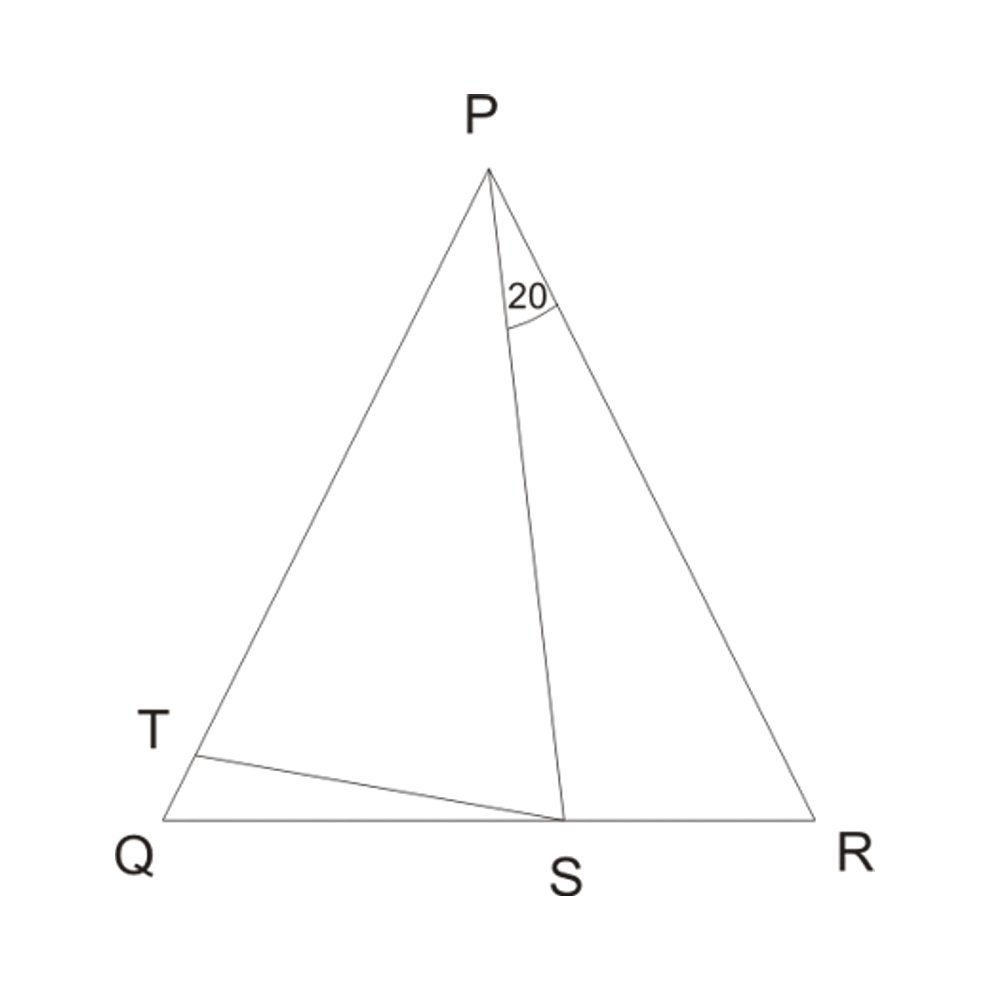Isosceles Triangle Problem

A is an isosceles triangle where . point and is in and respectively, so that is an isosceles triangle with . if is , Find ?
No vote yet
4 votes
Easy Math Editor
This discussion board is a place to discuss our Daily Challenges and the math and science related to those challenges. Explanations are more than just a solution — they should explain the steps and thinking strategies that you used to obtain the solution. Comments should further the discussion of math and science.
When posting on Brilliant:
*italics*or_italics_**bold**or__bold__paragraph 1
paragraph 2
[example link](https://brilliant.org)> This is a quote# I indented these lines # 4 spaces, and now they show # up as a code block. print "hello world"\(...\)or\[...\]to ensure proper formatting.2 \times 32^{34}a_{i-1}\frac{2}{3}\sqrt{2}\sum_{i=1}^3\sin \theta\boxed{123}Comments
Let ∠TPS= x ,∠PTS=PST=z ,∠PQR=∠PRQ=y.
Thus we have,
2y=180-(20+x), or y= 2180−(20+x).
Again, 2z=(180-x). or, Z= 2(180−x).
Now in △TQS, we have, ∠STP the external angle. Thus, z= y+ ∠TSQ or, ∠TSQ=2(180−x)- 2180−(20+x) or, ∠TSQ= 10
10 degrees.
let angle PRQ = angle PQR = x
angle PTS = x + angle TSQ
=> angle PST = x + angle TSQ
angle PSQ = angle PST + angle TSQ = x + 2 * angle TSQ angle PSQ = x + 20 (ext angle of triangle PSR)
=> 2 * angle TSQ = 20 => angle TSQ = 10
Log in to reply
In your fifth line I get lost, you say x + 2 * angle TSQ angle PSQ. What does it mean?
∠PRQ = ∠PQR = a , because isosceles triangle.
∠PTS = ∠PST = b , because isosceles triangle.
∠TSQ = c
∠PSR = 180-(20+a) , because angles in a triangle add up to 180. Or, ∠PSR = 180-(b+c) , because angles in a straight line is 180.
Therefore we get 180-(20+a) = 180-(b+c), or simply, 20+a = b+c. Or in terms of a we get: a = b+c-20
∠QTS = 180-(a+c) . Or, ∠QTS = 180-b . Therefore we get a+c=b . Or in terms of a we get : a = b-c .
We now have two equations, (1) a = b+c-20 and (2) a = b-c
So, b+c-20 = b-c (Subtract b from both sides) c-20 = -c (Add c to both sides) 2c-20 = 0 Therefore, 2c = 20 or simply c = 10
The question asks for ∠TSQ which we named c. We found out c is 10 degrees. So answer is 10.